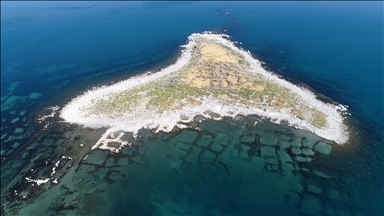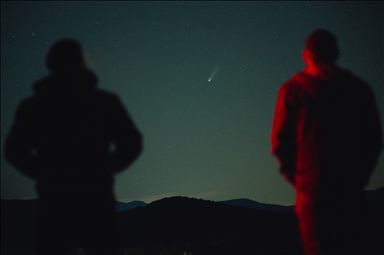
RED SEA, EGYPT - JULY 29: Diploria is seen as Bioluminescence, defined as the biological light emission of marine life, is captured in Red Sea using a “fisheye” lens through a new scientific imaging system in Egypt on July 29, 2025. Underwater cinematographer and documentary producer Tahsin Ceylan stated that scientists have developed special imaging technologies allowing underwater photographers to record bioluminescence from the perspective of the fish. Ceylan noted that ultraviolet (UV) photography requires blue light sources, as well as UV filters for flashes and lenses. ( Tahsin Ceylan - Anadolu Agency )
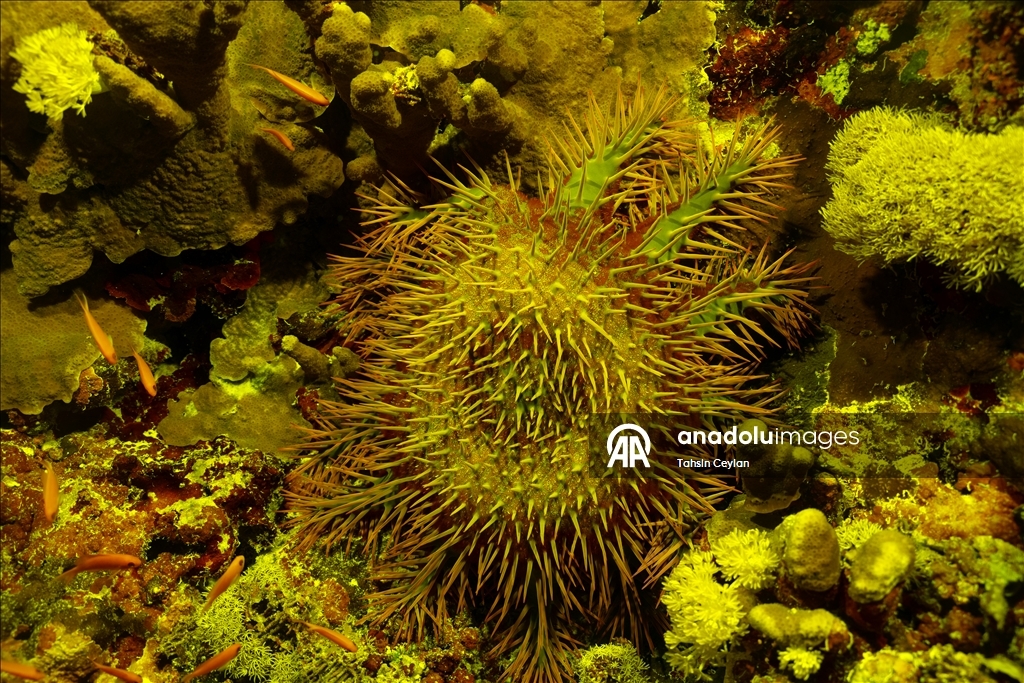
RED SEA, EGYPT - JULY 29: Bioluminescence, defined as the biological light emission of marine life, is captured in Red Sea using a “fisheye” lens through a new scientific imaging system in Egypt on July 29, 2025. Underwater cinematographer and documentary producer Tahsin Ceylan stated that scientists have developed special imaging technologies allowing underwater photographers to record bioluminescence from the perspective of the fish. Ceylan noted that ultraviolet (UV) photography requires blue light sources, as well as UV filters for flashes and lenses. ( Tahsin Ceylan - Anadolu Agency )
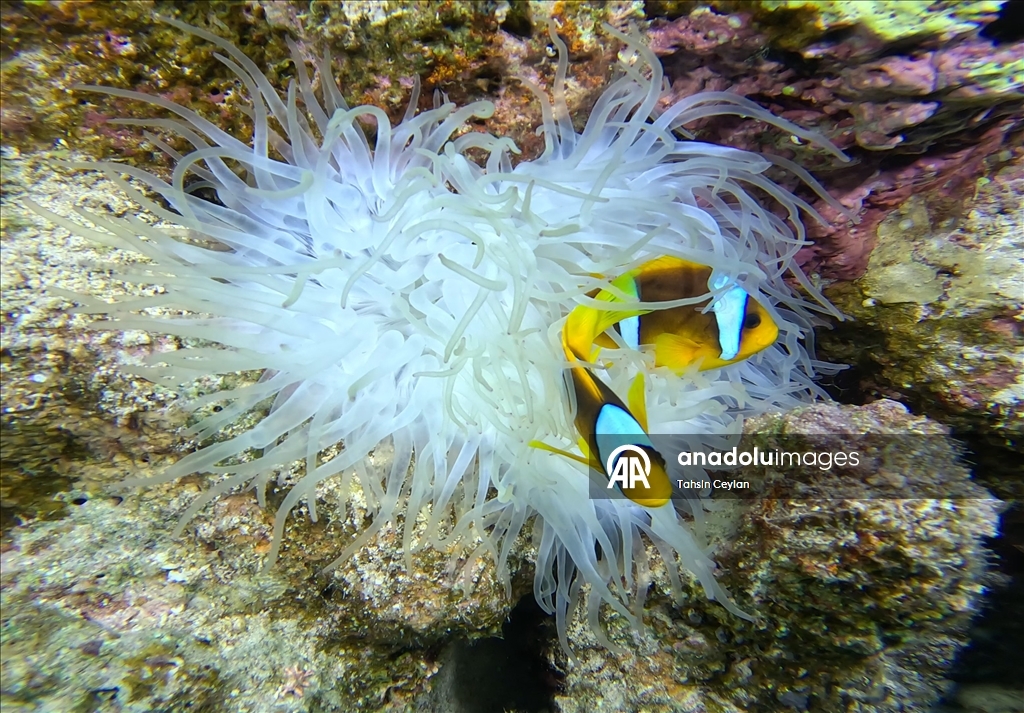
RED SEA, EGYPT - JULY 29: Clownfish (genus Amphiprion) are seen as Bioluminescence, defined as the biological light emission of marine life, is captured in Red Sea using a “fisheye” lens through a new scientific imaging system in Egypt on July 29, 2025. Underwater cinematographer and documentary producer Tahsin Ceylan stated that scientists have developed special imaging technologies allowing underwater photographers to record bioluminescence from the perspective of the fish. Ceylan noted that ultraviolet (UV) photography requires blue light sources, as well as UV filters for flashes and lenses. ( Tahsin Ceylan - Anadolu Agency )
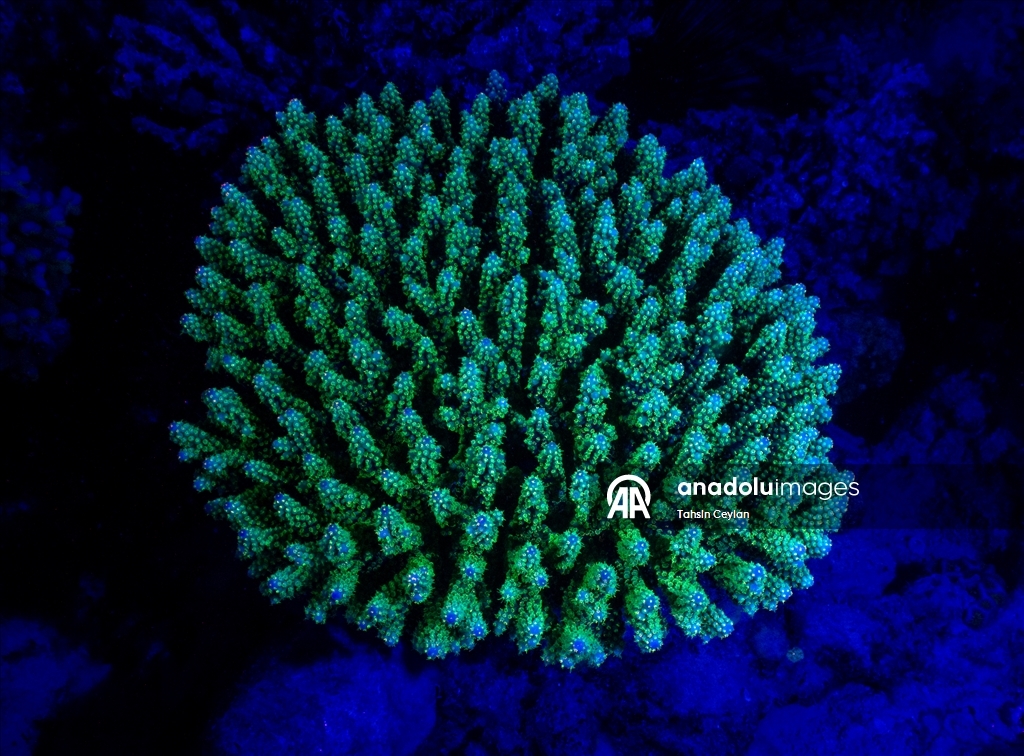
RED SEA, EGYPT - JULY 29: Bioluminescence, defined as the biological light emission of marine life, is captured in Red Sea using a “fisheye” lens through a new scientific imaging system in Egypt on July 29, 2025. Underwater cinematographer and documentary producer Tahsin Ceylan stated that scientists have developed special imaging technologies allowing underwater photographers to record bioluminescence from the perspective of the fish. Ceylan noted that ultraviolet (UV) photography requires blue light sources, as well as UV filters for flashes and lenses. ( Tahsin Ceylan - Anadolu Agency )
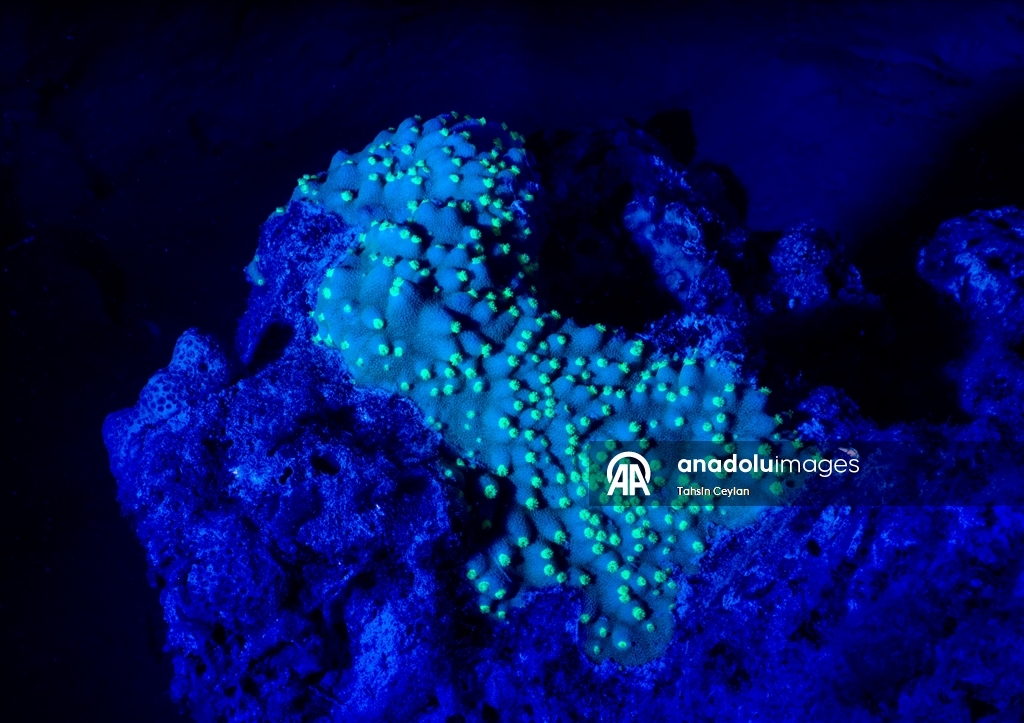
RED SEA, EGYPT - JULY 29: Bioluminescence, defined as the biological light emission of marine life, is captured in Red Sea using a “fisheye” lens through a new scientific imaging system in Egypt on July 29, 2025. Underwater cinematographer and documentary producer Tahsin Ceylan stated that scientists have developed special imaging technologies allowing underwater photographers to record bioluminescence from the perspective of the fish. Ceylan noted that ultraviolet (UV) photography requires blue light sources, as well as UV filters for flashes and lenses. ( Tahsin Ceylan - Anadolu Agency )
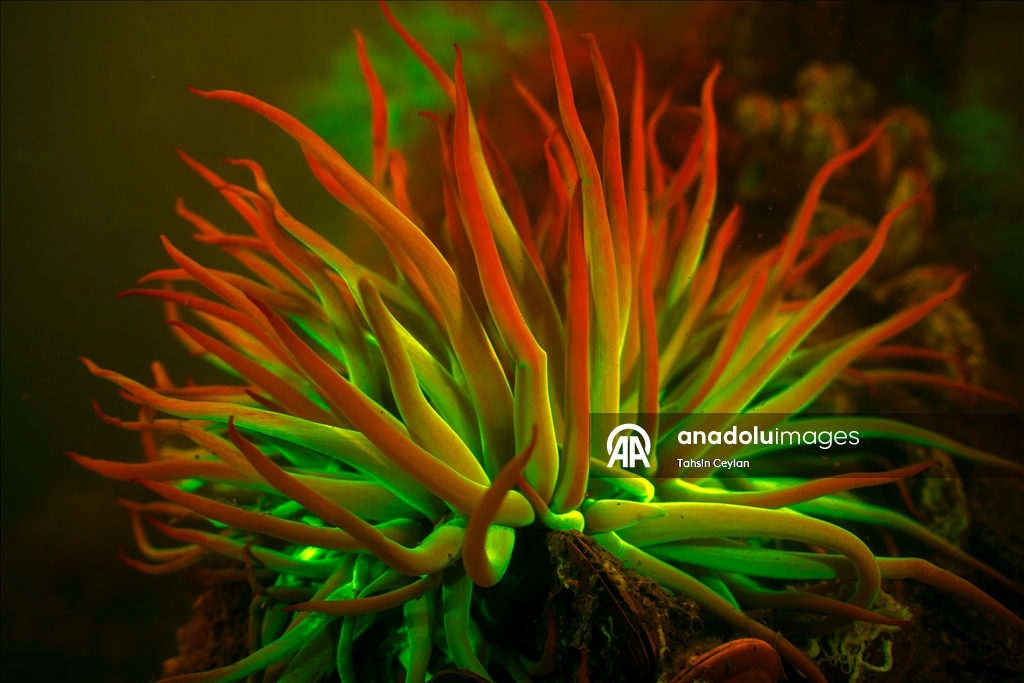
RED SEA, EGYPT - JULY 29: Sea anemone is seen as Bioluminescence, defined as the biological light emission of marine life, is captured in Red Sea using a “fisheye” lens through a new scientific imaging system in Egypt on July 29, 2025. Underwater cinematographer and documentary producer Tahsin Ceylan stated that scientists have developed special imaging technologies allowing underwater photographers to record bioluminescence from the perspective of the fish. Ceylan noted that ultraviolet (UV) photography requires blue light sources, as well as UV filters for flashes and lenses. ( Tahsin Ceylan - Anadolu Agency )
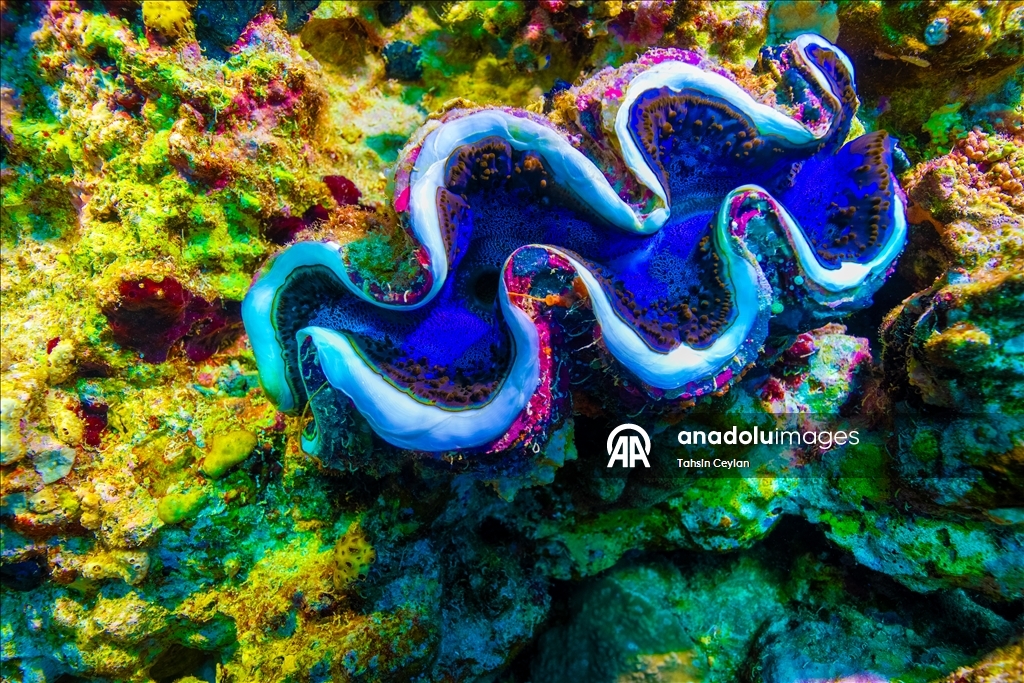
RED SEA, EGYPT - JULY 29: Oyster is seen as Bioluminescence, defined as the biological light emission of marine life, is captured in Red Sea using a “fisheye” lens through a new scientific imaging system in Egypt on July 29, 2025. Underwater cinematographer and documentary producer Tahsin Ceylan stated that scientists have developed special imaging technologies allowing underwater photographers to record bioluminescence from the perspective of the fish. Ceylan noted that ultraviolet (UV) photography requires blue light sources, as well as UV filters for flashes and lenses. ( Tahsin Ceylan - Anadolu Agency )
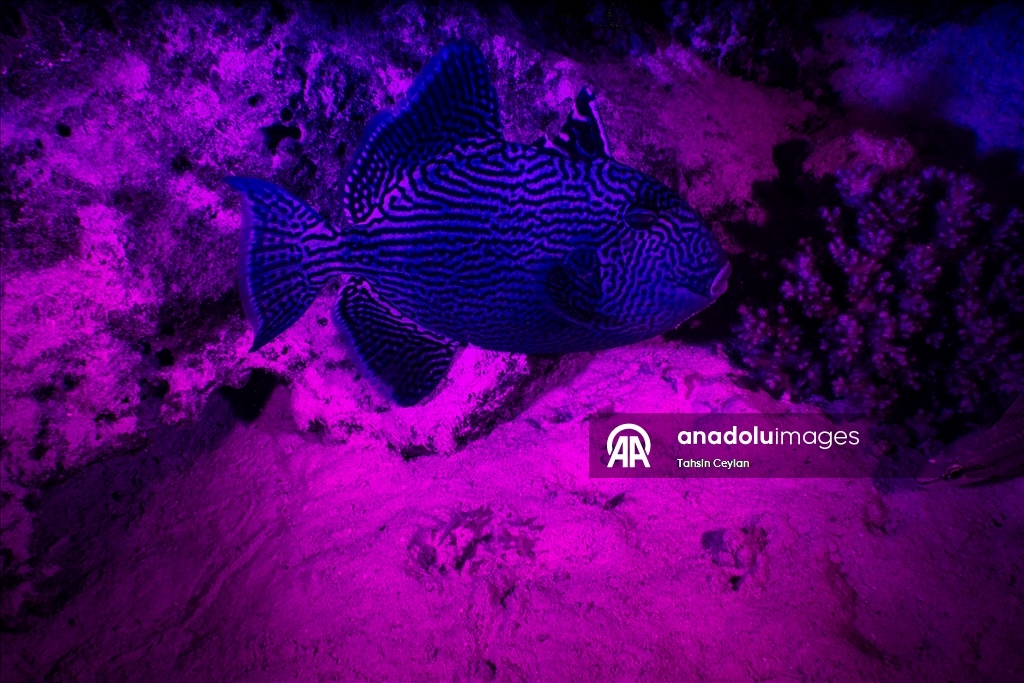
RED SEA, EGYPT - JULY 29: Bioluminescence, defined as the biological light emission of marine life, is captured in Red Sea using a “fisheye” lens through a new scientific imaging system in Egypt on July 29, 2025. Underwater cinematographer and documentary producer Tahsin Ceylan stated that scientists have developed special imaging technologies allowing underwater photographers to record bioluminescence from the perspective of the fish. Ceylan noted that ultraviolet (UV) photography requires blue light sources, as well as UV filters for flashes and lenses. ( Tahsin Ceylan - Anadolu Agency )

RED SEA, EGYPT - JULY 29: Alligator gar (Atractosteus spatula) is seen as Bioluminescence, defined as the biological light emission of marine life, is captured in Red Sea using a “fisheye” lens through a new scientific imaging system in Egypt on July 29, 2025. Underwater cinematographer and documentary producer Tahsin Ceylan stated that scientists have developed special imaging technologies allowing underwater photographers to record bioluminescence from the perspective of the fish. Ceylan noted that ultraviolet (UV) photography requires blue light sources, as well as UV filters for flashes and lenses. ( Tahsin Ceylan - Anadolu Agency )
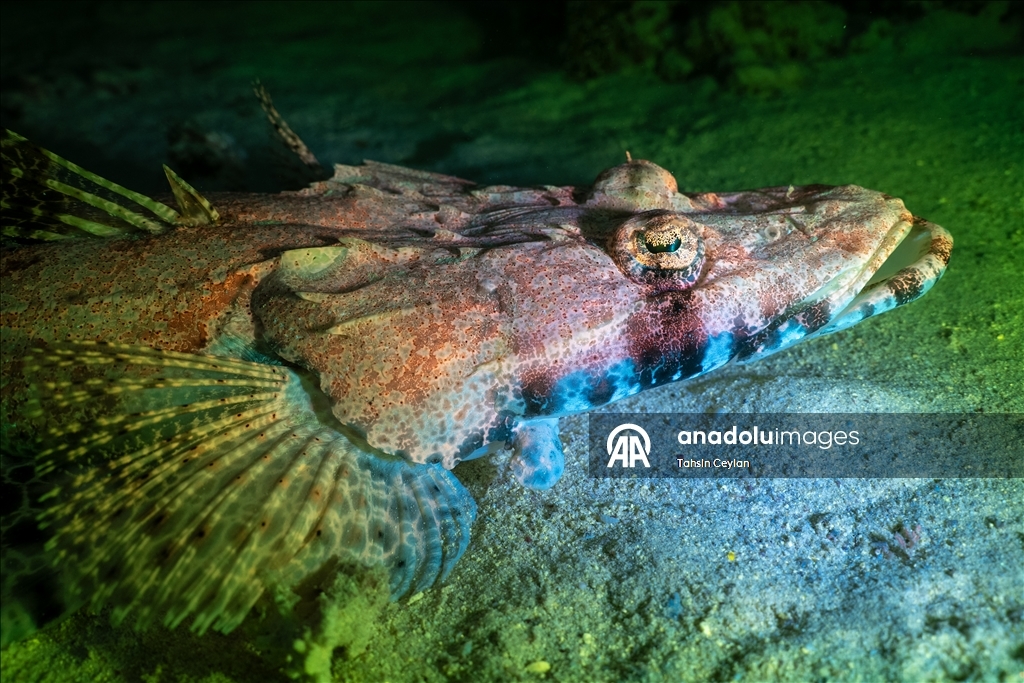
RED SEA, EGYPT - JULY 29: Alligator gar (Atractosteus spatula) is seen as Bioluminescence, defined as the biological light emission of marine life, is captured in Red Sea using a “fisheye” lens through a new scientific imaging system in Egypt on July 29, 2025. Underwater cinematographer and documentary producer Tahsin Ceylan stated that scientists have developed special imaging technologies allowing underwater photographers to record bioluminescence from the perspective of the fish. Ceylan noted that ultraviolet (UV) photography requires blue light sources, as well as UV filters for flashes and lenses. ( Tahsin Ceylan - Anadolu Agency )
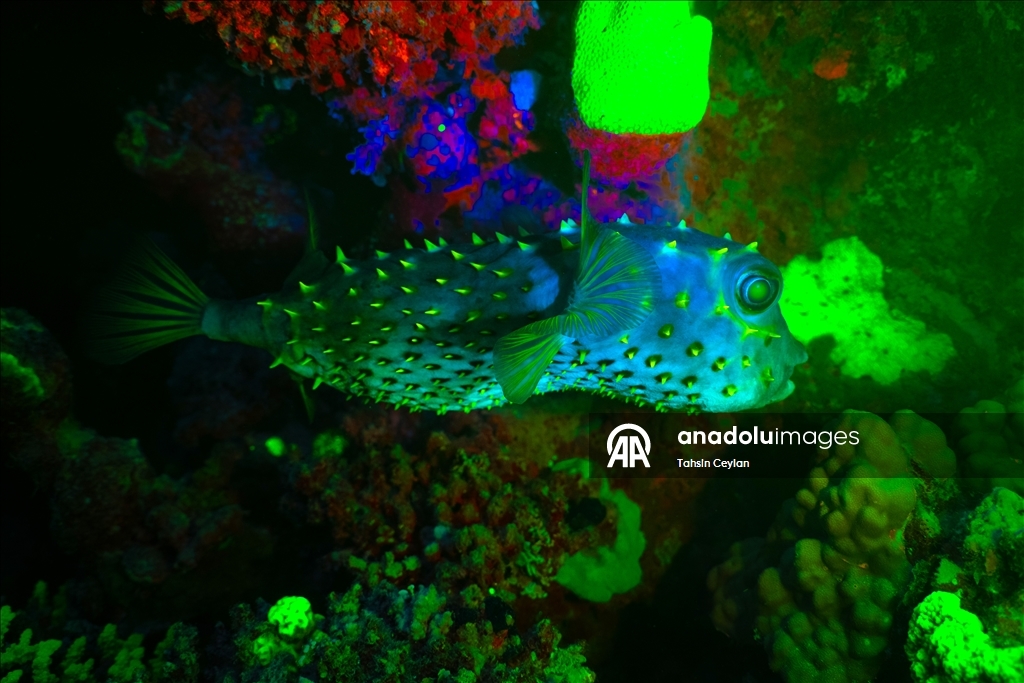
RED SEA, EGYPT - JULY 29: Spotbase burrfish (Cyclichthys spilostylus) are seen as Bioluminescence, defined as the biological light emission of marine life, is captured in Red Sea using a “fisheye” lens through a new scientific imaging system in Egypt on July 29, 2025. Underwater cinematographer and documentary producer Tahsin Ceylan stated that scientists have developed special imaging technologies allowing underwater photographers to record bioluminescence from the perspective of the fish. Ceylan noted that ultraviolet (UV) photography requires blue light sources, as well as UV filters for flashes and lenses. ( Tahsin Ceylan - Anadolu Agency )
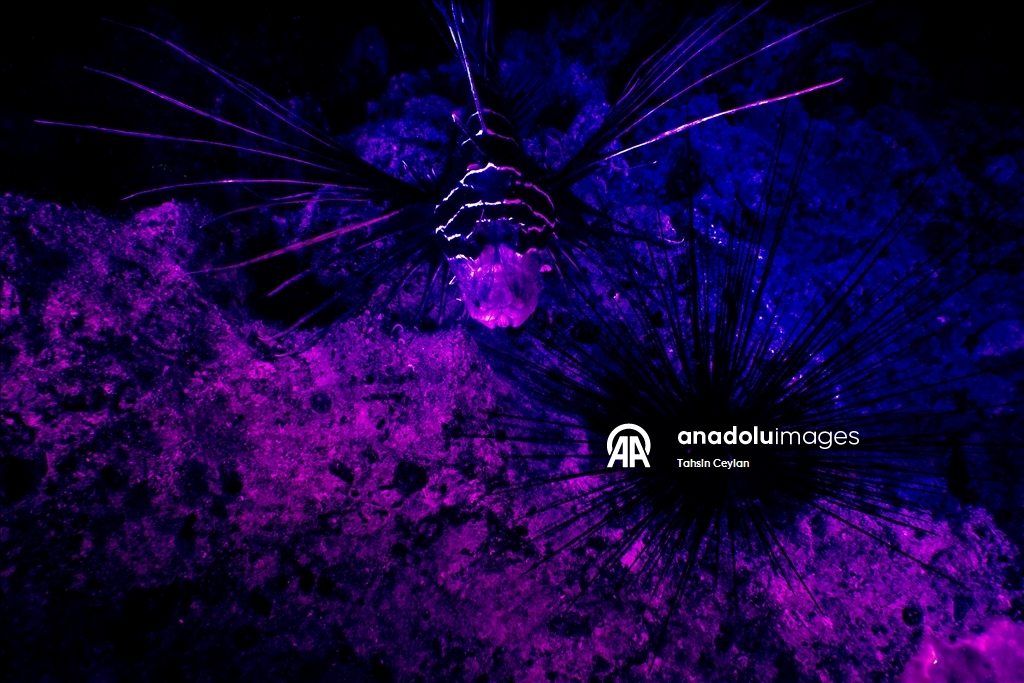
RED SEA, EGYPT - JULY 29: Lionfish (Pterois) is seen as Bioluminescence, defined as the biological light emission of marine life, is captured in Red Sea using a “fisheye” lens through a new scientific imaging system in Egypt on July 29, 2025. Underwater cinematographer and documentary producer Tahsin Ceylan stated that scientists have developed special imaging technologies allowing underwater photographers to record bioluminescence from the perspective of the fish. Ceylan noted that ultraviolet (UV) photography requires blue light sources, as well as UV filters for flashes and lenses. ( Tahsin Ceylan - Anadolu Agency )
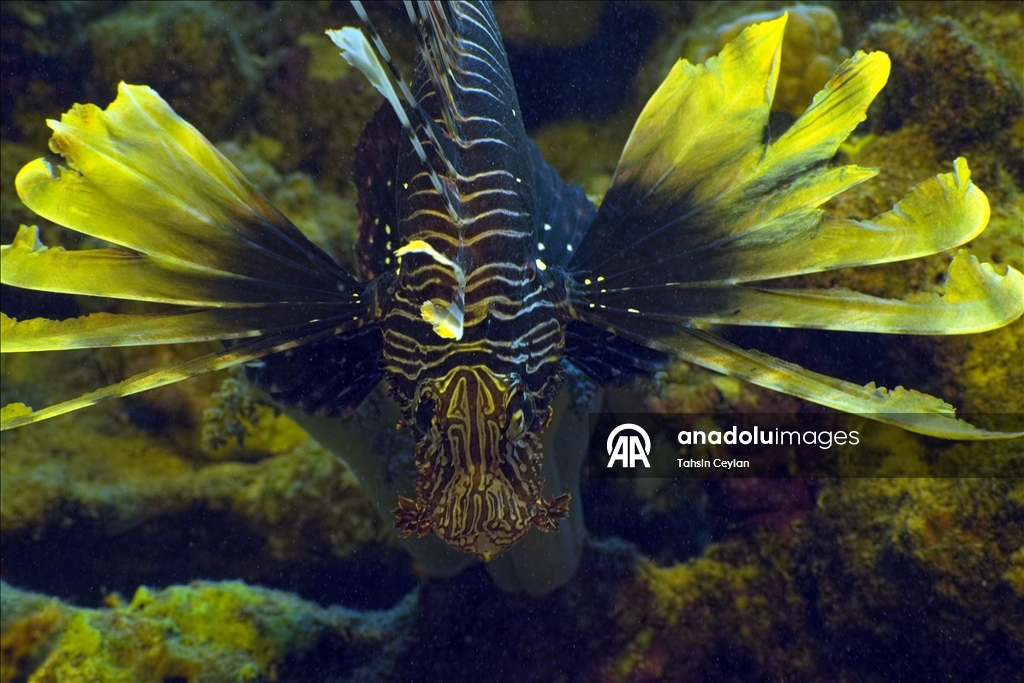
RED SEA, EGYPT - JULY 29: Lionfish (Pterois) is seen as Bioluminescence, defined as the biological light emission of marine life, is captured in Red Sea using a “fisheye” lens through a new scientific imaging system in Egypt on July 29, 2025. Underwater cinematographer and documentary producer Tahsin Ceylan stated that scientists have developed special imaging technologies allowing underwater photographers to record bioluminescence from the perspective of the fish. Ceylan noted that ultraviolet (UV) photography requires blue light sources, as well as UV filters for flashes and lenses. ( Tahsin Ceylan - Anadolu Agency )



